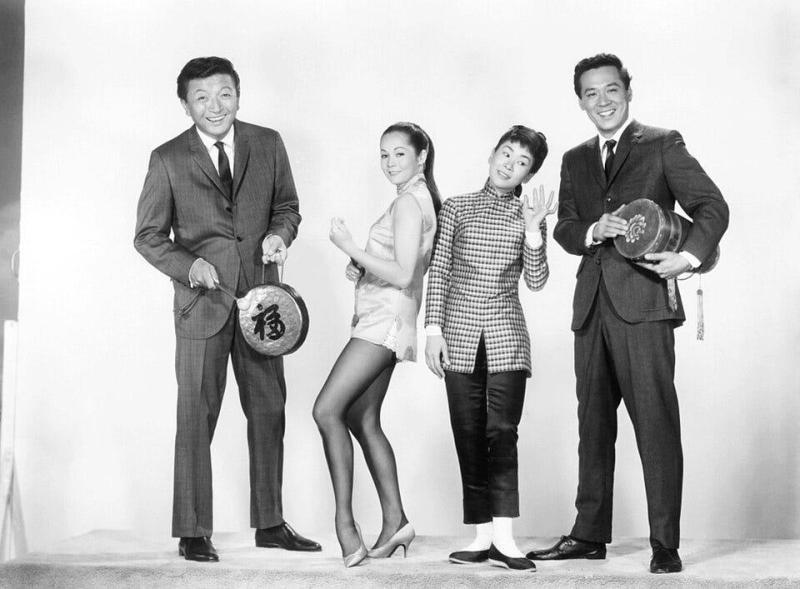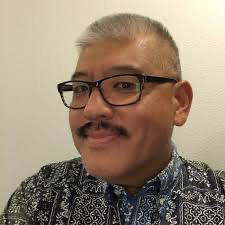
Heartthrob: How James Shigeta became Hollywood's first Japanese American leading man (and he was one of ours)
I’m often asked who I’d like to play my detective protagonist when my novels become something you can watch in a large, dark room with a bunch of strangers—or, more likely these days, streamed on your personal device in the comfort of your own home, because the pandemic has turned you and the rest of the world into sweatpants-wearing recluses.
To date, nobody has beaten down my door with a demand for screen rights. If it ever happens, the folks purchasing those rights aren’t likely to give a shit who I think should be cast in the role. But when I’m asked by well-meaning book club members, coworkers who found out about my secret life as a novelist, or relatives I only see on the holidays, I give them a polite answer: “I don’t know any of the young actors who might be able to do a good job with it, but I’m sure there’s lots of them”.
There is one man who would have been perfect for the role in my mind, though—if only my books had come out in the time they were set in.
The moment when guys who looked like me in Hollywood productions started being something more than the houseboy or the gardener happened in 1959 when a Honolulu boy hit the silver screen as an LAPD detective—without an accent—in The Crimson Kimono. Despite the exploitative title, James Shigeta played an American cop. Not only was he the lead, he competed with his white partner for the girl—and won.
Trailer for the Crimson Kimono (1959)
The film really wasn’t all that great, but that’s not the point. One of ours was the Hollywood marquee name, the romantic lead. It never happened before (editor’s note: Kikkawa is referring to Japanese Americans. The Japanese national Sessue Hayakawa was among first male sex symbols in Hollywood during the silent film era). The times were unfortunately not ready for this, as reflected in the trailer, where the romance between Victoria Shaw’s character and Shigeta’s character is described as being “between an American girl and a Japanese boy.” The trailer also asks, “What is his fascination with American girls?” Despite this, it’s clear that The Crimson Kimono is Shigeta’s vehicle.
I’ve always felt a special affinity with James Shigeta. We’re both Japanese Americans from Honolulu, we both attended NYU, and we’re both 5’10”. Unfortunately for me, that’s where the similarities end. I never had Shigeta’s talent or willingness to discard my anonymity to get in front of a camera, which is probably why I ended up as a paycheck civil servant and novelist. But I draw inspiration from him, and think to myself, whenever I watch one of his films: that could have been me, in theory—even if there are a lot of conditions, caveats and stipulations attached to the idea, along with a healthy suspension of disbelief (a prerequisite for writing fiction).
Trailer for "Flower Drum Song" (1961)
One of my favorite things to watch Shigeta in is perhaps his best-known vehicle, 1961’s Flower Drum Song. Forget that it’s three Japanese Americans and one half-Chinese, half-white woman portraying ethnic Chinese characters, and the production is rife with silly stereotypes. It’s Rodgers and Hammerstein, baby! And it’s goofy fun, the way white people are allowed to have goofy fun when they improbably break into song and dance in the streets. (Is it just me, or does “Grant Avenue” sound like a children’s Christmas song?)
Shigeta plays the handsome Wang Ta, college playboy and object of desire for three women, who ultimately (and ironically) ends up falling for the “arranged marriage” candidate. I always thought, though, that Shigeta’s chemistry was better with Nancy Kwan than it was with Miyoshi Umeki, and I would have dumped them both in a heartbeat for the neglected Reiko Sato. (In real life, Sato hooked up with Marlon Brando. Not too shabby!)
Shigeta singing “You are beautiful” to Miyoshi Umeki
Shigeta fairly oozes charisma in Technicolor, although I have to admit that Jack Soo steals the show as ne’er-do-well nightclub owner Sammy Fong.

.
Jack Soo, Nancy Kwan, Miyoshi Umeki and James Shigeta in A Flower Drum Song publicity shot
As evidenced by his turn in Flower Drum Song, Shigeta had a ridiculously good singing voice. He actually started his entertainment career as a singer in 1950. His agent gave him a “non-ethnic” stage name at the time, dubbing him “Guy Brion”. Shigeta had success on the L.A. supper club circuit as a vocalist, which included engagements at venues such as the Players Club and Mocambo. An enlistment in the U.S. Marines later landed him in Asia during the Korean War. Ceasefire put him in Japan where he signed with Toho Studios under his real name. He was ironically billed as “The Frank Sinatra of Japan”, though he was always thought of in Japan as an American singer. Shigeta sang on The Dinah Shore Show when he returned to the United States.
My favorite single of Shigeta’s is “We Speak the Same Language” (1962) —maybe a tongue-in-cheek reference to his “exotic” appearance, but a great little tune that showcases his rich baritone and makes you want to loosen the four-in-hand knot of your necktie just a bit and reach for a Baccarat flute full of of Perrier-Jouët Belle Époque:
Thanks to James Shigeta, I had the confidence to write a Japanese American protagonist who occupied the same space in time as him, who was like him: confident, handsome and the face in the foreground.
_________________________________________
 Scott Kikkawa is a fourth generation Japanese American raised in Hawai‘i Kai. Currently a federal law enforcement officer, the New York University alumnus is the author of three noir detective novels set in postwar Honolulu—Kona Winds, Red Dirt, and Char Siu.
Scott Kikkawa is a fourth generation Japanese American raised in Hawai‘i Kai. Currently a federal law enforcement officer, the New York University alumnus is the author of three noir detective novels set in postwar Honolulu—Kona Winds, Red Dirt, and Char Siu.
He has been honored with an Elliot Cades Award for Literature, and a crime fiction short story of his was selected as one of the “Other Distinguished Stories of 2021” in The Best American Mystery and Suspense 2022 anthology. He is a columnist and an Associate Editor for The Hawai‘i Review of Books. His short stories have appeared in six issues of Bamboo Ridge, Journal of Hawai‘i Literature and Arts.
Kona Winds and Red Dirt debuted on the Small Press Distribution fiction bestseller list and were featured in HONOLULU Magazine’s list of “Essential Hawai‘i Books You Should Read: The Next 134.”
Discussion Questions
- Who was James Shigeta, and what role did he play in The Crimson Kimono (1959)?
- Why was James Shigeta’s role in The Crimson Kimono (1959) so significant for Asian American actors at that time?
- How did the author feel personally connected to Shigeta?
- Why do you think Shigeta changed his stage name to Guy Brion early in his career?
- Flower Drum Song shows stereotypes. How would audiences today react to those scenes?
- The author found inspiration in Shigeta’s example, even though their careers diverged. How can seeing someone with a similar background inspire your own goals?
Add new comment